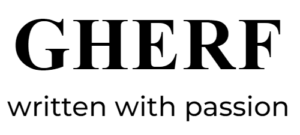Technostress is often viewed negatively as a “dark side” phenomenon, associated with the negative consequences of technology use. However, it can also have positive effects, known as eustress. Technostress is commonly understood as a “modern disease of adaptation” caused by an inability to cope with new computer technologies in a healthy manner. As a result, a research paper titled “Integrating and Synthesising Technostress Research: A Meta-Analysis on Technostress Creators, Outcomes, and IS Usage Contexts” was published by Ilja Nastjuk, Simon Trang, Julius-Viktor Grummeck-Braamt, Marc T. P. Adam, and Monideepa Tarafdar. In this paper, they analyzed the impact of technostress on outcomes and usage contexts, exploring the dark side of technology. The corresponding author is Ilja Nastjuk who is affiliated with the Department of Business Administration at the University of Goettingen, Goettingen, Germany.
Technostress foundations
Theoretical foundations of technostress are based on the transactional model of stress, which states that stress arises when environmental demands exceed an individual’s capacity to respond. In the context of technology, technostress occurs when technology-related demands are taxing on an individual and require a change in their coping responses, leading to psychological, physical, and behavioral outcomes. Technology environmental conditions, such as complexity, reliability, and usability, can act as technostress creators, leading to stress. The experience of technostress depends on cognitive appraisal processes, which assess and classify technology environmental conditions in terms of their impact on well-being and available response resources. Technostress creators can have varying impacts on psychological and behavioral outcomes, depending on the situational context.
Technostress creators and outcomes
This text discusses the concept of technostress, which is a type of stress caused by the use of technology. It explains that as technology has become more prevalent in organizations, technostress has emerged in a wide range of professional contexts. Five main sources of technostress are identified techno-complexity, techno-invasion, techno-insecurity, techno-overload, and techno-uncertainty. The text notes that technology use in organizations is primarily driven by a utilitarian purpose, with a focus on increasing productivity and efficiency. It also highlights that users may feel pressure to upskill and learn new technologies as they are introduced, which can cause stress. The text concludes by emphasizing that the concept of technostress is an important consideration for organizations, as it can have a negative impact on employee performance, job satisfaction, and turnover intentions.
Technostress research in the private usage context focuses on social networking services, IS in vehicles, and private smartphone usage. The purpose of information system use is mostly hedonic, with individuals aiming to generate self-fulfilling value. In the private context, the most consistent set of technostress creators investigated comprises techno-complexity, techno-invasion, techno-overload, and techno-uncertainty. Techno-complexity refers to the negative perception that technology is difficult to handle, while techno-invasion reduces the amount of time individuals spend with their families. Techno-overload links to a range of stressors, including social overload, information overload, and system feature overload. Techno-uncertainty refers to feelings of discomfort and insecurity caused by a lack of knowledge or understanding of how technology works.
Technostress is a significant dark-side phenomenon
The study found that technostress creators, which are stress-creating conditions resulting from technology, are a significant psychological concern with relevant behavioral consequences. The negative psychological effects are medium and large in the organizational and private contexts, respectively, while the effects on behavior are smaller in magnitude. The study highlights the dark side of technostress and suggests that future research should explore both the positive and negative sides of stress in the technology environment.
The study found that technostress creators have a greater impact on psychological outcomes (such as anxiety, depression, and job satisfaction) than on behavioral outcomes (such as job performance and organizational commitment). The study also highlights the complex processes that translate psychological outcomes into behavioral outcomes. This is consistent with general models of stress, which view psychological outcomes as a mediator between stress-creating conditions and behavioral outcomes.
The study found that technostress creators have a greater impact on psychological and behavioral outcomes in the private context as compared to the organizational context. This is because the decision to use technology in the private context is generally not prescribed by implicit norms, and users have a greater perceived ability to replace a certain technology by switching to another. However, switching costs can be perceived as stressful and represent an important determinant of how individuals react to technostress, especially in the private context.
In contrast, organizational technology usage is characterized by strong social norms, utilitarian usage objectives, and often the mandatory use of specific technologies, which limits users’ ability to switch technologies. Organizations also invest in end-user support services, such as technical support provision, literacy facilitation, involvement facilitation, and innovation support, which can reduce the effects of technostress. These support resources are not necessarily available to users in the private context.
Recent research has found that emotional and instrumental social support can act as an inhibitor of technostress in both organizational and private usage contexts. However, previous studies have suggested that social support can also act as a technostress creator, particularly in the private context, as users may feel obligated to respond to social support requests. Therefore, social support can have both positive and negative effects on technostress outcomes.
Theoretical and practical implications of technostress research for practice and policymakers
This paper presents the first meta-analysis of the technostress literature, focusing on effect sizes, which refer to the magnitude of the effect of technostress creators on outcomes. The meta-analysis integrates and synthesizes data from 102 articles containing a collective 113 individual studies and 49,955 independent observations to estimate effect sizes with high statistical power. The study provides strong empirical evidence that technostress is a relevant dark side phenomenon and offers precise effect size estimates for different outcomes, contexts, and technostress creators, which help the research community identify where and how to explore research opportunities in the technostress realm.
The meta-analysis contributes to the technostress literature in four meaningful ways, including providing knowledge on the problem relevance of technostress, demonstrating agreement on the general mechanism governing how technostress emerges and its impact on psychological and behavioral outcomes, identifying differences with respect to the theoretical underpinnings for the stressors and outcomes in the respective domains, and guiding future research on investigating specific relationships.
The study offers insights for managerial practice, highlighting the significant psychological outcomes of technostress and the importance of identifying relevant psychological indicators to prevent psychological health risks. The study also provides accurate estimates for each technostress creator to help managers identify tailored countermeasures. The findings suggest that technology providers should take technostress into consideration when designing technologies or guidelines around technology usage. Moreover, the study reaffirms that technostress is a ubiquitous concern in both the organizational and private usage contexts and recommends policymakers to introduce mandatory technology design elements to minimize or warn users of the dangers of technostress and to invest in resources to combat technostress.
Study conclusion
In this study, the authors conduct a meta-analysis of technostress research to identify its effects on behavioral and psychological outcomes in both private and organizational contexts. This study is the first of its kind and offers insights for future research on the topic. The authors systematically analyze the empirical foundations of technostress and provide suggestions for future conceptual and empirical work to advance its theoretical development.
The full article can be accessed in the European Journal of Information Systems.

